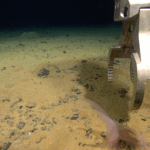In a universe where connectivity transcends mere wires and signals, “The Network: A Science Fiction Thriller” emerges as a vivid tapestry woven from the threads of technology and human experience.
Hot Posts109- Page
Reflected total normalized flux πFn (left panel) and signed degree of linear polarization Ps (right panel) as functions of the planetary phase angle α and wavelength λ for our Hadean:
BOSTON — Commercial space infrastructure developer Axiom Space has named its chief revenue officer, Tejpaul Bhatia, as its new chief executive. Axiom announced April 25 that it promoted Bhatia, who
May 2, 2025 was National Space Day, an occasion to reflect on the history of the American spaceflight program for all its triumphs and tragedies, as well as to pause
Ezcosplay Women Long Sleeve NASA Pullover Hoodie Peek into the cosmos with the Ezcosplay Women Long Sleeve NASA Pullover Hoodie, a stylish and comfortable sweatshirt that pays homage to humanity’s
HELSINKI — Chinese startup InfinAstro has secured early funding for its plan to fill a gap in China’s commercial on-orbit services. InfinAstro, officially Beijing Infinity Aerospace Technology Co., Ltd., has
Almost a decade after the third installment, Metroid Prime 4: Beyond is coming to the Nintendo Switch. However, the larger Metroid series has remained quite active, and it’s rather hard
3 Min Read What Is Aerodynamics? (Grades K-4) This article is for students grades K-4. What Are the Four Forces of Flight? Aerodynamics is the way air moves around things.
WASHINGTON — A Vega C rocket successfully launched an Earth science satellite for the European Space Agency, a mission officials said was also a demonstration of European space sovereignty. The
WASHINGTON — Katalyst Space Technologies has acquired Atomos Space, a move that combines two venture-funded startups focused on in-space servicing and orbital transfer vehicles. Arizona-based Katalyst completed the acquisition of
-
 012024 in Review: Highlights from NASA in Silicon Valley
012024 in Review: Highlights from NASA in Silicon Valley -
 02Panasonic Leica Summilux DG 15mm f/1.7 ASPH review
02Panasonic Leica Summilux DG 15mm f/1.7 ASPH review -
 03From Polymerization-Enabled Folding and Assembly to Chemical Evolution: Key Processes for Emergence of Functional Polymers in the Origin of Life
03From Polymerization-Enabled Folding and Assembly to Chemical Evolution: Key Processes for Emergence of Functional Polymers in the Origin of Life -
 04How New NASA, India Earth Satellite NISAR Will See Earth
04How New NASA, India Earth Satellite NISAR Will See Earth -
 05And Thus Begins A New Year For Life On Earth
05And Thus Begins A New Year For Life On Earth -
 06Astronomy Activation Ambassadors: A New Era
06Astronomy Activation Ambassadors: A New Era -
07SpaceX launch surge helps set new global launch record in 2024















